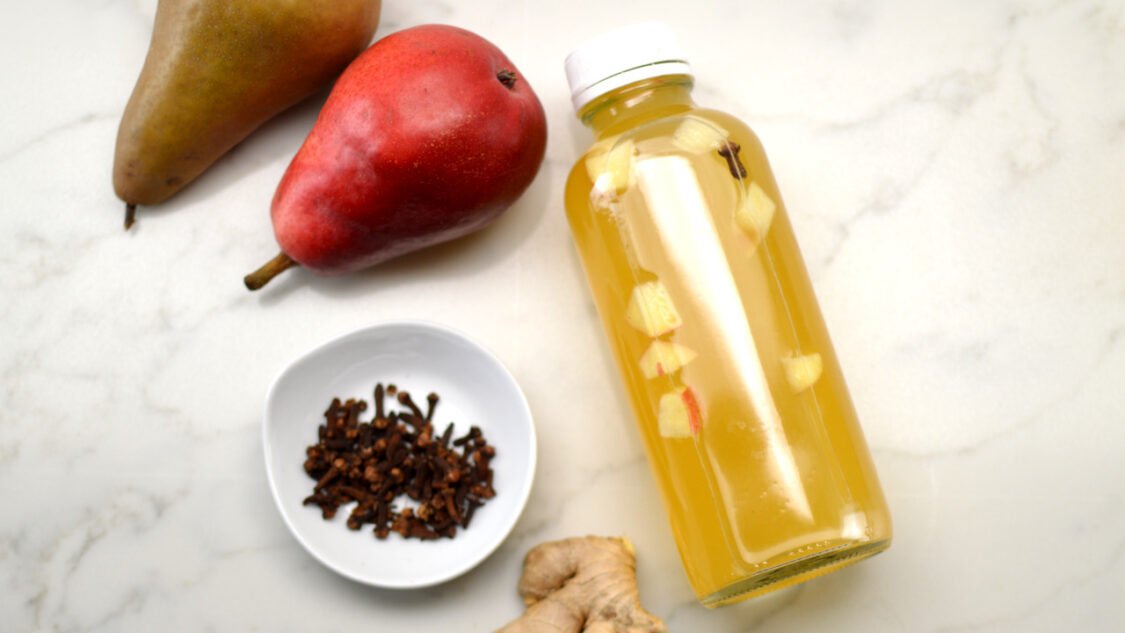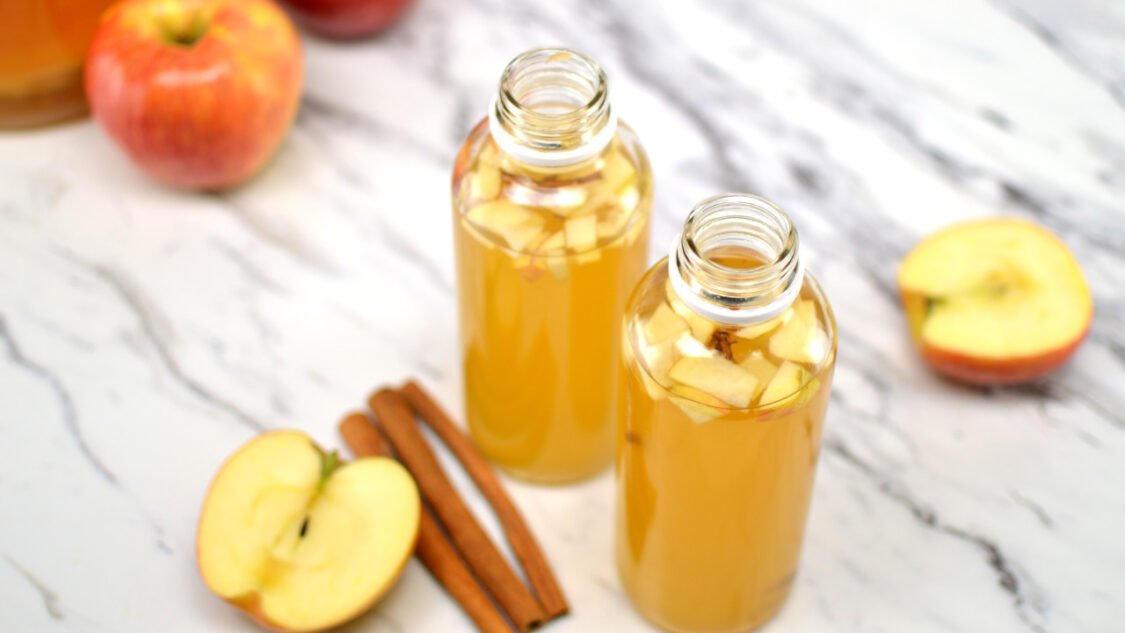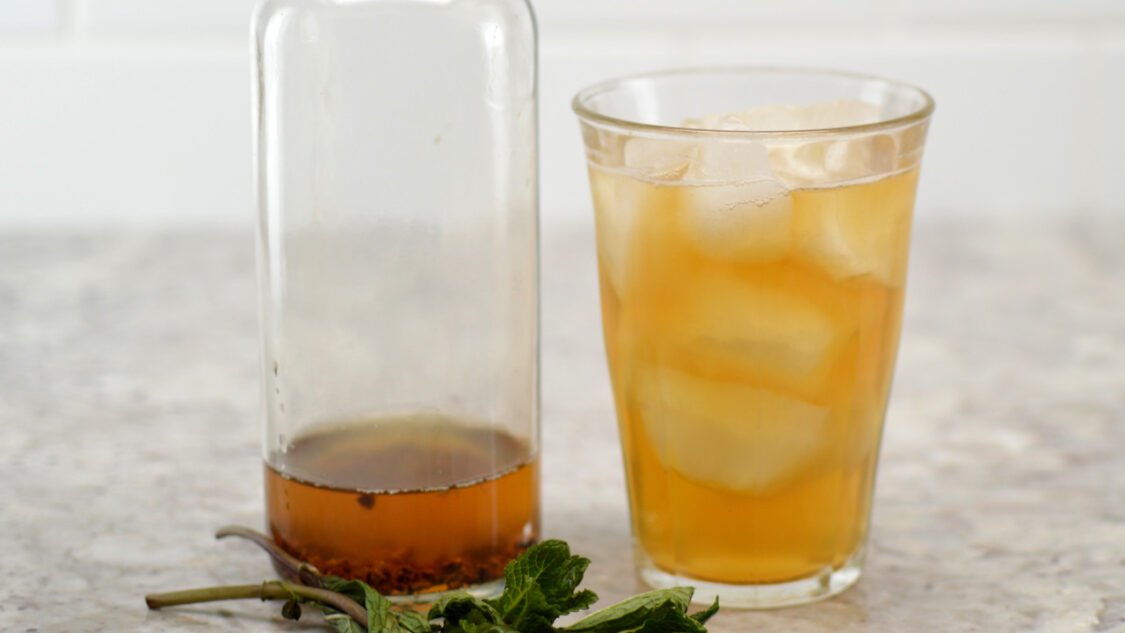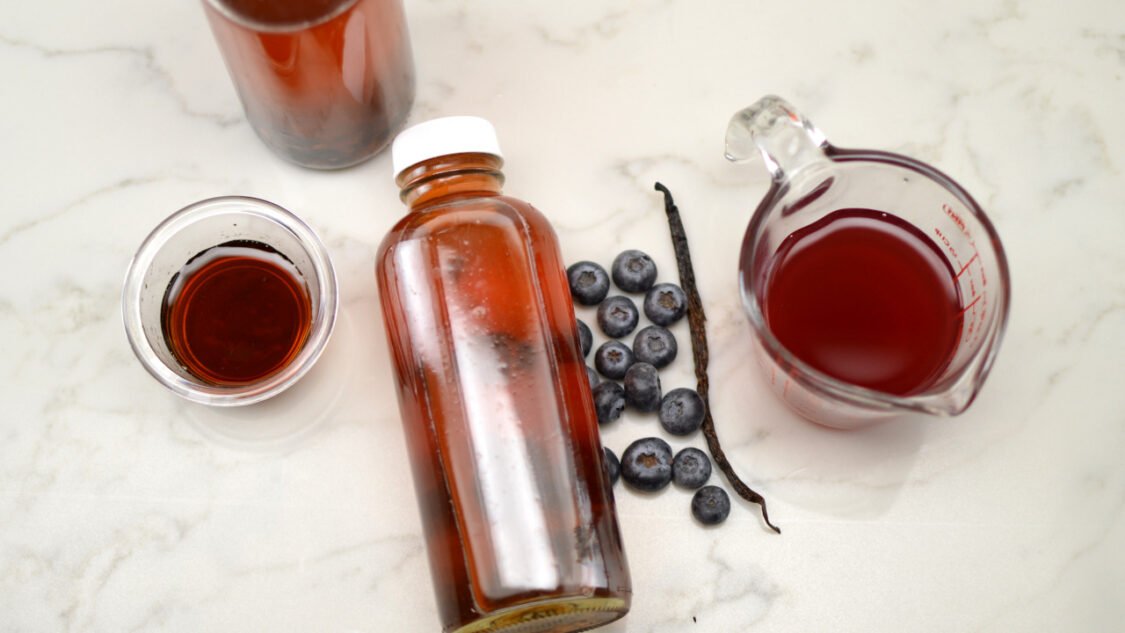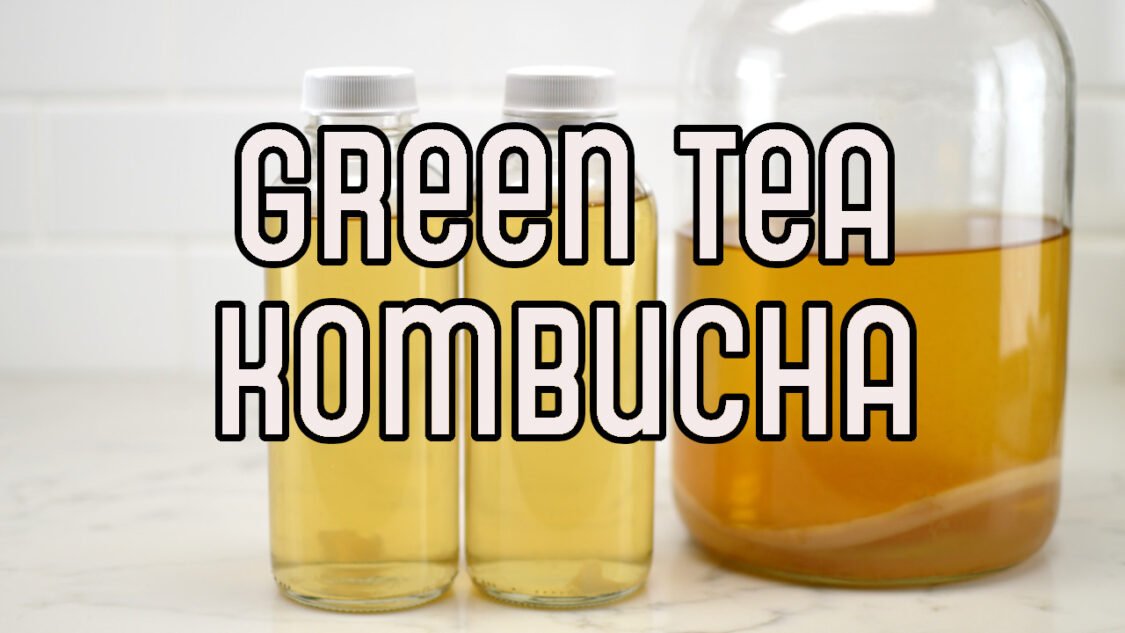Tangy Mango Tango Kombucha
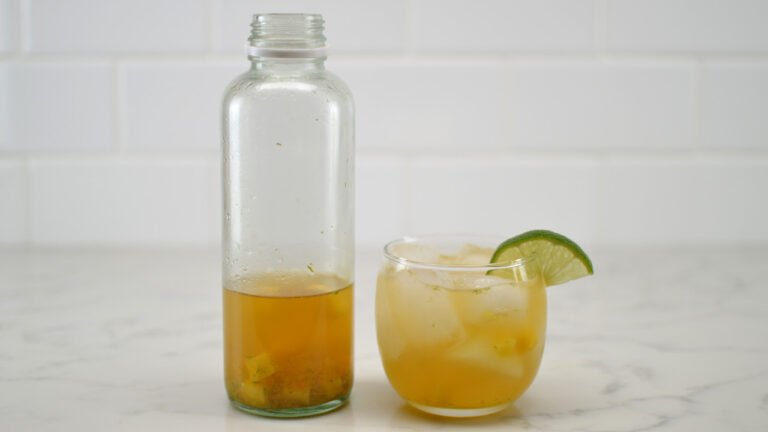
Tangy Mango Tango Kombucha is a tantalizing blend of green tea, rooibos tea, and fresh fruit juices that will awaken your taste buds! Bursting with the mouth-watering flavor of succulent mango, tangy tangerine, and zesty citrus, this brew will invigorate your senses. The aroma alone is enough to transport you to a tropical paradise, with the sweet, fruity notes wafting through the air. Made with the fresh, ripe ingredients and fermented to perfection, each sip is packed with probiotics and tropical fruit flavors.
Note: this recipe is written to use a base kombucha made with 50% green tea and 50% rooibos tea. In addition 1/2 cup of the white sugar used in primary fermentation is replaced with 1 cup of coconut sugar. Refer to step 2 of how to make kombucha for a refresher on primary fermentation.
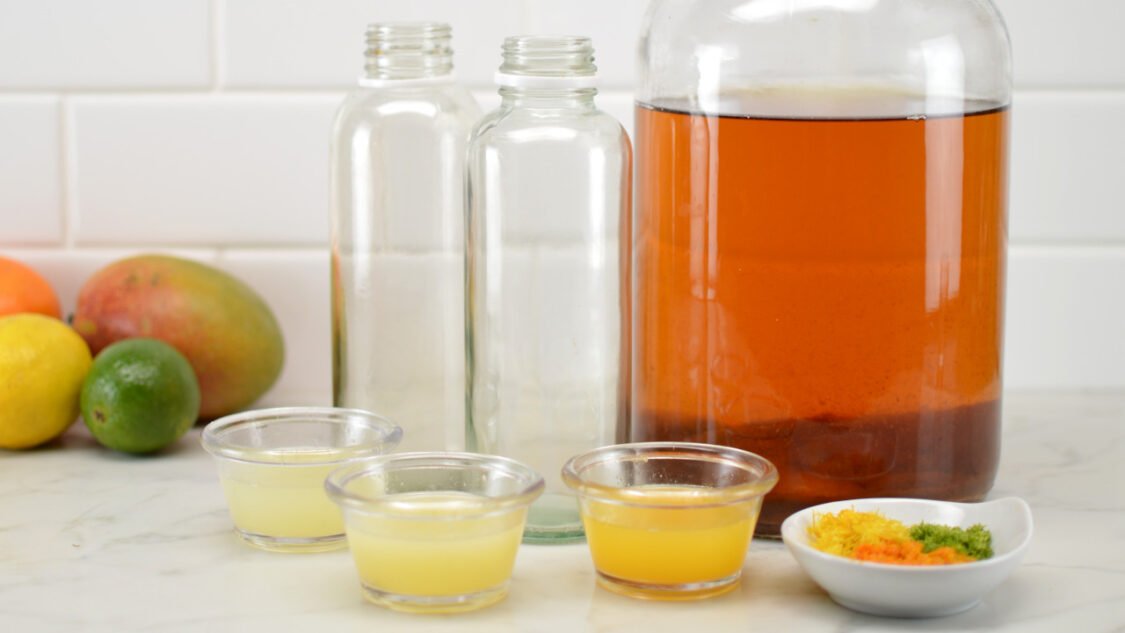
Kombucha Fermentation Overview
There are two fermentation phases when making kombucha:
Primary Fermentation: This is when you transform sweet tea into tart and tasty kombucha. Get all the details at my article on how to make kombucha.
Secondary Fermentation: This is when you carbonate your homemade kombucha by adding flavors (like mango, tangerine and citrus juice) and sugars and bottling it.

Preparing for Secondary Fermentation
This recipe makes about 7 x 16 fluid ounce bottles of finished kombucha (from a 1-gallon batch of unflavored homemade kombucha aka from your primary fermentation).
Reserve 2 cups (about 16 oz / 0.47L) kombucha and your SCOBY from your completed primary fermentation and set aside – you will use this as your starter for your next gallon batch of kombucha.
With your kombucha starter tea and SCOBY placed aside, you now have enough kombucha left to flavor and fill your bottles. This guide assumes are using 16 oz. glass bottles which are a popular choice for kombucha; however, there are many options for bottling kombucha.
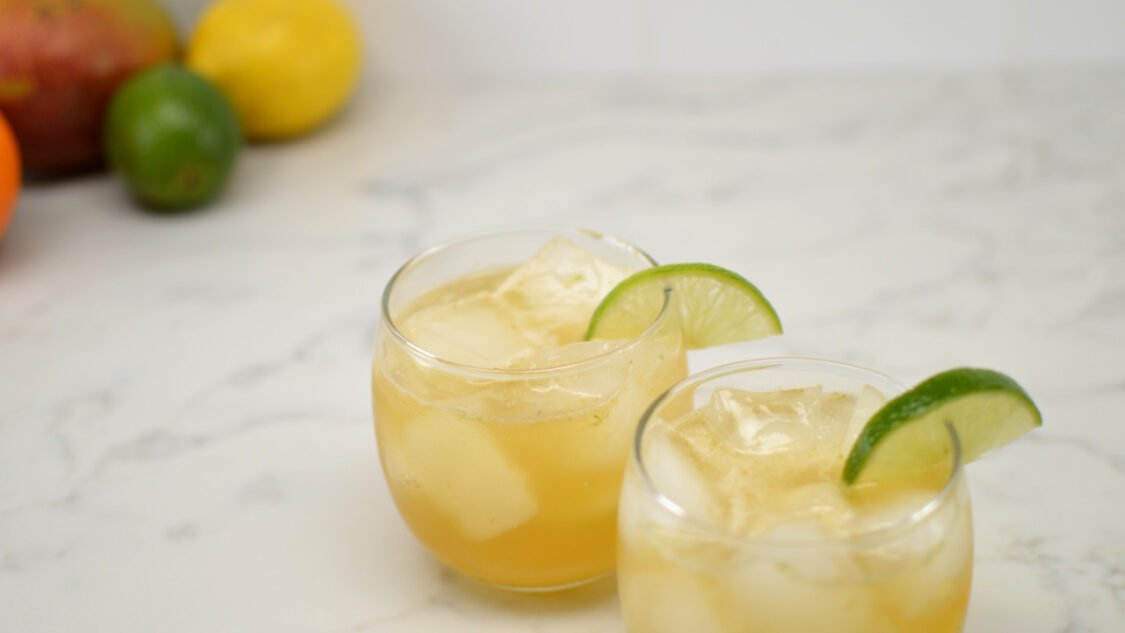
Ingredients to make Tangy Mango Tango Kombucha
Kombucha Finished kombucha from your first fermentation is the base to which you will add the mint, vanilla and chocolate flavors
Green tea: Green tea is a type of tea that is made from the leaves of the Camellia sinensis plant. Unlike black tea, which is fully fermented, green tea leaves are minimally processed and not allowed to oxidize, preserving their natural green color and delicate flavor profile.
Green tea is known for its light, grassy, and slightly bitter taste, as well as its high levels of antioxidants, especially the polyphenol known as epigallocatechin gallate (EGCG). These antioxidants have been linked to a variety of potential health benefits, including reducing the risk of heart disease, certain types of cancer, and type 2 diabetes.
Rooibos tea: Rooibos tea, also known as red bush tea, is a type of herbal tea that is made from the leaves of the rooibos plant, which is native to South Africa. The tea has a distinctive reddish-brown color and a naturally sweet and slightly nutty flavor, with a smooth and mellow taste. Rooibos tea is caffeine-free and low in tannins.
Coconut Sugar: Coconut sugar is a sweetener made from the sap of the flower buds of the coconut palm tree. It has a caramel-like flavor and can be used as a substitute for traditional cane sugar in cooking and baking.
Mango: Mango is a tropical fruit with a sweet and juicy flesh that is typically orange or yellow in color. A ripe fresh mango has sweet, citrus, and almost melon flavors all in one. The aroma of mangos is reminiscent of tropical fruits like papaya and pineapple with floral notes. Fresh or frozen mango works great. Here I used bite sized cubes of frozen mango since it was more convenient.
Tangerine Juice: Tangerine is a type of citrus fruit that is similar in appearance to an orange, but smaller and with a brighter, reddish-orange color. Tangerines have a sweet and tangy flavor
Lime Juice: Lime is a citrus fruit that is typically round or oval in shape, with a bright green color and a thin, smooth skin. It is similar in taste and appearance to a lemon, but is slightly sweeter and less acidic.
Lemon Juice: Lemon is often described as having the aromas of rose, lavender and pine with a slight herbaceous note. Citral is the compound which contributes to most to the characteristic “citrus” flavor. Citral in lemons can be found in the form of two isomers, neral and geranial (same compound with a different arrangement of atoms in the molecule and therefore different characteristics.)
Sugar: A touch of additional sugar for bacteria and yeast to feed on which creates carbonation–extra fizzy goodness. When filling 16 ounce bottles I’ve found a sugar cube has the right amount of sugar (1 tsp) for carbonation and is a convenient way to add the right amount without the mess.
How to make Tangy Mango Tango Kombucha
Add Flavors: Divide mango and citrus juices between the bottles.
Bottle: Transfer kombucha to fermentation bottles.
Condition: For 3 to 10 days, until it reaches the carbonation level you like.
Enjoy: Chill in the fridge before serving and strain out fruit pieces when pouring (optional)

Tangy Mango Tango Kombucha Recipe
Yield: 7 bottles • Active time: 20 minutes • Total time: 3 -10 days
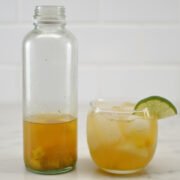
This recipe assumes you are doing a secondary fermentation (flavoring and carbonation) in the bottle. You may also incorporate a third fermentation using the same proportions but following the third fermentation steps.
Ingredients:
1 gallon homemade kombucha from a first fermentation, 3.7 L – made with 1/2 green tea and 1/2 rooibos tea
1 cup fresh or frozen mango chunks, or 3/4 cup mango puree
1/2 cup fresh tangerine juice
1 tablespoon fresh lime juice
1 teaspoon fresh lemon juice
7 sugar cubes or 1 Tbs sugar, 12 g
Instructions:
Make Kombucha: If you haven’t already, make a 1 gallon batch of kombucha using 50% green (4 bags or 4 tsp loose) and 50% green tea(4 bags or 4 tsp loose) (4 bags or 4 tsp loose). In addition 1/2 cup of the white sugar used in primary fermentation is replaced with 1 cup of coconut sugar (in total use 1/2 cup white sugar and 1 cup coconut sugar). Refer to step 2 of how to make kombucha for a refresher on primary fermentation.
Prepare Fruit: Peel, seed and roughly chop 1 cup mango if using fresh. If frozen, thaw and coursely chop about 1 cup. Juice tangerine, lime and lemon into a small bowl and add chopped mango. Stir well to incorporate flavors.
Flavor: Evenly divide mango-citrus mixture among bottles
Fill bottles: Transfer kombucha into fermentation bottles, leaving about 1 inch empty at the top
Sweeten: Add one sugar cube per 16 bottle or evenly divide sugar between bottles (about 1 tsp per 16 0z bottle)
Cap: Cap the filled bottles and tighten the cap snugly.
Ferment: Place in a dark, room temperature area for 3 to 10 days, until it reaches the carbonation level you like. This process will go faster in warmer climates, and slower in cooler climates.
Enjoy: Chill your Tangy Mango kombucha bottles in the refrigerator before serving and strain the kombucha to remove mango pieces when serving (optional).
Homemade kombucha can be stored in the fridge, tightly sealed, for several weeks
Tips & Tricks:
Make sweet tea for your next batch the night before you flavor and bottling and let it cool on the stove overnight so that you can flavor your kombucha and get your next batch started at the same time.
If this is your first time brewing, it may be helpful to use a plastic water bottle as a gauge. Fill a recyclable plastic bottle with kombucha (leaving 1.5 inches empty at the top). When this bottle becomes rock hard, you’ll know the glass bottles are also ready. This will help you gauge how long it take for kombucha to carbonate your climate and will prevent bottle explosions.
Nutrition Information:
Kombucha Recipes You Might Also Like
More Kombucha Knowledge
Helping you learn to brew kombucha, find inspiration for new kombucha flavors and use kombucha to make kombucha mocktails


